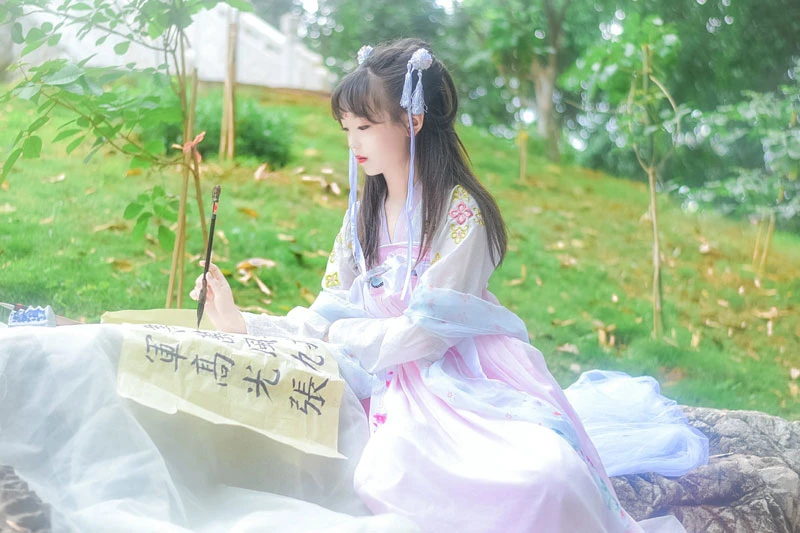The Rising Popularity of Hanfu in China
Hanfu refers to the Chinese traditional clothing for millennia, until it was replaced by Western dress in the early 20th century. In recent decades, Hanfu has been seeing a revival in China driven by youth who have rediscovered pride in their cultural roots. But just how popular is Hanfu in China today?
Hanfu can be traced back 3000 years to the Warring States period. It continued evolving through the Han, Tang, Song, Ming and Qing dynasties. Hanfu was the main attire for Han Chinese people for thousands of years.
However, From the 1900s to the end of the century, Within 3 generations, the thousand-year tradition of Hanfu rapidly vanished from everyday life. Hanfu was largely obscure in China. Very few Han Chinese wore Hanfu on a daily basis anymore, apart from some elderly in rural areas and remote mountain villages. Most people regarded Hanfu as backward, old-fashioned clothing that had no place in a modern nation.
The Revival Begins
In the early 2000s, enthusiasm for Hanfu saw an emergence among some groups of Chinese youth. Internet forums and clubs dedicated to studying Hanfu began proliferating. Young pioneers started reconstructing Hanfu styles and tailoring techniques based on historical research.
This self-organized Hanfu revival movement was driven by youth seeking to celebrate their cultural heritage in contrast to previous policies suppressing Chinese traditions. Wearing Hanfu allowed them to visibly express ethnic pride and confidence in being Chinese.
The revival began as a small subculture with several thousand youth participating nationally. They wore Hanfu at cultural festivals, historic reconstructions, photography shoots, weddings and fashion shows. Enthusiasts also used Hanfu for singing, dancing, cosplay, Chinese opera, and performance.
Gaining Momentum
Over the 2010s, the Hanfu subculture rapidly expanded as its popularity gained momentum among Chinese youth. More historical research allowed recreation of hanfu styles from various ancient dynasties. Enthusiasts commissioned specialized Hanfu tailors and artisans to make intricate outfits.
Chinese e-commerce sites like Taobao started selling a wide range of Hanfu costumes and accessories. Chinese social media platforms like Weibo and Douyin were flooded with millions of photos of young people wearing Hanfu at themed gatherings and tourist attractions.
associations mushroomed across China to organize Hanfu events and promote education about traditional culture. Cities like Beijing, Shanghai, Shenyang and Hangzhou often held large Hanfu conferences and pageants attracting thousands of participants in colorful dynastic costumes.
Hanfu also became a hit among students at Chinese universities in the US, Australia and Europe as an emblem of their cultural identity abroad. Overseas Chinese youth created Hanfu societies at MIT, Stanford, Oxford and more. International Hanfu gatherings popped up in cities like Paris and Sydney.
By 2020, Hanfu had become a conspicuous subcultural phenomenon among Chinese youth both domestically and abroad. Enthusiast numbers had risen to an estimated 5 million nationwide.
Mainstream Attention
Given its growth and vibrant online presence, Hanfu started garnering attention from mainstream Chinese media and businesses.
State media like China Daily and Global Times reported on the Hanfu movement as a positive expression of young people connecting with traditional culture, contrasting past eras of radical Cultural Revolution iconoclasm.
Chinese technology giants like Baidu, JD.com and Xiaomi sponsored Hanfu gatherings and competitions. Some local governments provided funding for Hanfu cultural activities and education.
Hanfu was featured in popular Chinese TV dramas like ‘Under the Power’ and ‘Story of Yanxi Palace’. CCTV’s multi-million viewer Spring Festival Gala showcased Hanfu stage performances.
Luxury brands like Gucci and Dior incorporated Hanfu elements in fashion shows and ads targeted at Chinese consumers.
Responding to rising demand, Alibaba’s Taobao and JD.com expanded their Hanfu product selections into the tens of thousands, with garments selling for hundreds to thousands of dollars.
These trends reflect growing mainstream awareness and commercialization of Hanfu, catalysts for its further proliferation in China.
Current Scope of the Hanfu Movement
So how widespread is the wearing of Hanfu in China today? It has gained visible popularity, but remains a predominantly youth subculture.
Surveys indicate roughly 10 million Chinese participate in Hanfu activities, mostly youth under 35 years old. Enthusiasts are concentrated in large urban centers and university towns.
At major Hanfu events, participant numbers can range from a hundred up to as high as 10,000 for the biggest gatherings in cities like Beijing or Shanghai.
Daily Hanfu wearers outside of specific cultural events are rarer, but still number in the hundreds of thousands nationally. These are youth who integrate Hanfu into their everyday fashion.
However, in most Chinese cities, Hanfu is still an uncommon sight on the streets. Older generations and working professionals seldom wear traditional garments outside of weddings or funerals.
Rural populations, which comprise 40% of China’s 1.4 billion citizens, very rarely wear Hanfu in daily life. But some rural villages have Hanfu groups performing for tourists.
So the Hanfu revival is substantial but still niche compared to China’s massive population. It has nonethelesscome remarkably far from obscurity to a widely recognized youth subculture.
Future Trajectory
Hanfu’s popularity growth shows little sign of slowing down as social media fuels its momentum among younger generations.
But it remains to be seen whether this evolve beyond a youth subculture into a mainstream national trend. The movement may be limited by regional fragmentation, demographics and polarization.
However, the cultural pride, artistic beauty and sense of community offered by Hanfu associations will likely propel continued expansion of the revival. Already, Hanfu has been brought back from obscurity to become an iconic emblem of celebrating traditional Chinese culture.

